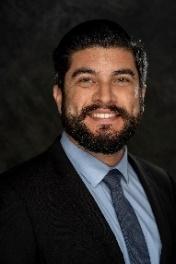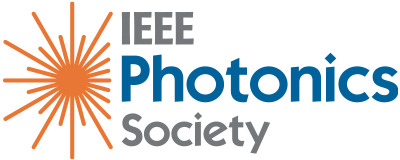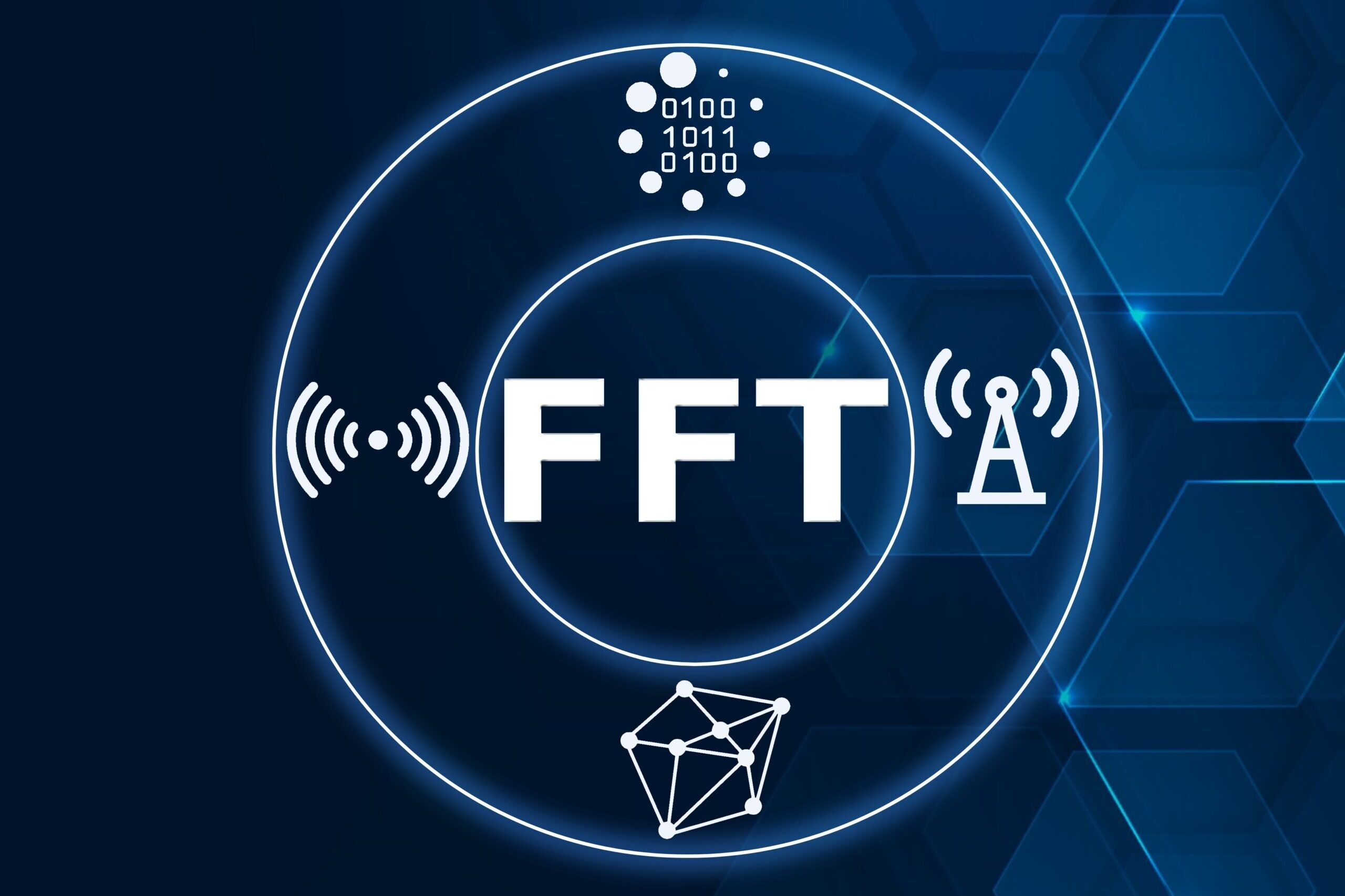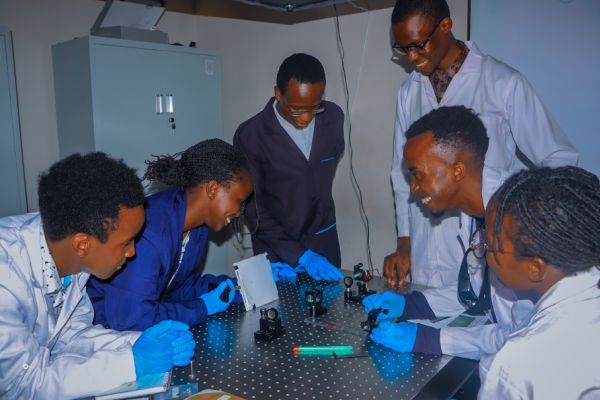By Steven Estrella, Ph.D.
Freedom Photonics (a Luminar company)
1. Introduction
There are many ways that I could start this off, but I want to start by being candid. Being in a state of entanglement [1] for a full-time student and professional engineer is not easy and is not the typical path one would take through life, but it can be extremely rewarding and worthwhile, if the appropriate initial and boundary conditions are used. While it is easy for me now to say, “you should do this”, or “you should not do that”, the truth of the matter is these explanations are really made in hindsight and you need to go out and experience this paradigm for yourself. If you are considering taking this path, you should start by answering the question “why?” [2] and make sure your academic and professional overlap integral are as close to ‘1’ as possible along the way. There is much to learn about yourself and your surroundings in the process. Yes, you will make some mistakes, but you will also have successes. Here, I will share some of my experiences and lessons learned as a young engineer in a startup company, growing professionally, and simultaneously attending graduate school along the way.
First, I will start off with the early formative years, and share some very practical lessons learned, from being an intern and growing into a full-time employee. Then, I will delve into the middle of my engineering career, where I really gained a lot of practical and hands-on experience, by being open to new opportunities. Finally, I will discuss my experience as a simultaneous full-time graduate student and professional engineer, and some guidance for the inclined participant. Very likely, you will have learned some of these lessons already, but my goal here is to present some useful and practical takeaways for the adventurous engineer that can aid in the decision process.
2. Internship to Full-Time Job
There are a few things one should consider when either looking for an internship, interning and going to school, or transitioning from an internship to a full-time position.
2.1. Get Paid for Your Work
While there is no substitute for a great engineering intern experience at the beginning of your career, you likely have some initial related experience, which has value and should be compensated for. When looking for engineering internships, first focus on ones that are paid for. There are many reasons, but if the aim is to get experience as a “real” engineer, then you should be aware that professional engineers are paid to do a good job: you should be paid to do so as well.
Consider the trade-offs while being in school. You (or someone close to you) are paying tuition for an education: learning is your first job as a student. When considering an internship while in school, look for ones that fundamentally prioritize your academic education over your job. Often, this concept is well understood and abided by in an internship, but it should be discussed early on with a prospective employer. There is no point in paying tuition for an academic education if you are not going to prioritize it: the investment you make in yourself now will pay out dividends later in your career.
2.2. Do a Good Job
If you want to be considered for a full-time opportunity, you need to do a good job. Period. This does not mean that everything you have done was successful, but rather you learned from your mistakes and reapplied your new learning in a virtuous cycle [3]. Employers tend to evaluate an intern for a full-time position as someone who can be trained, learn on the job, and then be successful long term.
Developing good work habits early in your career will make a great impression on those around you. Good examples are being on time (or better yet, being early), being courteous to others, keeping your workspaces clean and organized, being presentable, and so on. These suggestions should come as no surprise, but you would be amazed at how quickly engineers can forget the simple matters as their focus becomes solely on solving challenging problems.
2.3. Negotiate Your First Offer
If you were once an intern now being offered a full-time job, congratulations! Now you should start negotiating your future salary and investment options with your employer. In terms of equity, if they are privately-owned, consider asking for stock-options or profit sharing as part of your total compensation package (TCP). If they are publicly owned, consider asking for restricted stock units (RSU). NOTE: securing equity in a company is an important topic that I will not cover here but is well covered elsewhere [4]. I highly advise you to do your own research and always consult a tax/financial professional.
Raises can be based on a percentage of your base salary, meaning that negotiating a slightly higher salary now can also help later. Salary is not everything, however. Consider your personal time off (PTO) as part of the TCP, and try asking for more, especially if further increases in salary or equity are no longer available (see Fig. 1). There are plenty of great books and articles written on negotiation (e.g., [5]), and I highly recommend taking the time to read one.

3. Full-Time Growth
When working for a small business, particularly a startup, there are some important considerations. Assuming it is your first professional job, you will often enter a whirlwind of fast-paced learning, development, and excitement.

3.1. Be a Broadband Absorber
In a small business, especially in an early start-up, most people end up wearing multiple “hats”, so you are going to do things that you like and some things you may not like. As an example, most engineers I have encountered enjoy the task of design; not all enjoy the task of repetitive testing. But one needs to understand both to be very proficient in either. Take every new engineering task as an opportunity to learn and a chance to do something different within the broad capabilities or “toolbox” of a photonics engineer (see Fig. 2).
I was faced with many challenges and stretched in both my capacity and capability as I took on new tasks. Some experiences were a first-time success, but the majority were not. I can certainly say that the real growth occurred in the unsuccessful attempts and trying again. So, absorb as much as you can while embedded in these experiences, and try to maintain a positive and broadband perspective.
Fig. 2. Early exposure to broadband spectrum of engineering tasks, and absorption of lessons learned, build a fantastic foundation upon which specific skills are constructed.
3.2. Be Focused and Proficient
It is very important to have goals and have back-up plans. Goals serve as checkpoints in time or space (or both) and create a guiding trajectory by connecting-the-dots. Inevitably along the way, there are road bumps, roadblocks, and setbacks, so it is important to have a back-up plan or alternative goals.
As an example, while I was completing my undergraduate degree from University of California – Santa Barbara (UCSB) in 2010, I applied to many graduate school programs and was not accepted into any. I had hit a goal roadblock. However, I took this as an opportunity to focus on my work in industry, by getting more hands-on research and development (R&D) experiences and publishing papers. Years later (2016), my focus would pay off and I would be accepted to graduate school at UCSB, completing one of my long-term goals. Through the continuous process of goal setting and following, road bumps, roadblocks, and setbacks can be circumnavigated, which has brought me to where I am today. The key to success here is to be proficient: as soon as you find one of these obstacles, re-evaluate your goals and plot a new trajectory forward.
3.3. The 80-to-90% “Rule”
“Don’t let perfection be the enemy of progress” as the saying goes—or something similar. In most school topics, you are often graded on whether you have the correct answer or not, however in engineering this is not always so. Often it is the process of achieving an answer that is just as important, so partial credit can be earned even with an incorrect answer. In the professional engineering workplace, the “correct” answer may not be known ahead of time, and the end result can be somewhat of a moving or highly flexible target. Thus, there is wasted effort in trying to pursue perfection or 100% correctness. Thus, it is the partial process that matters most, especially when there are significant time restraints.
In this case, achieving somewhere between 80% to 90% of the answer often strikes the right balance between accuracy and time (or rather money) spent: beyond this, time spent tends to asymptotically reach 100% (see Fig. 3). This piece of advice has certainly been one of the most helpful, and one that I remind myself of every now and then.

4. Full-Time Work and Graduate School
Although it has become increasingly more common to attend graduate school, due to the ever-increasing competitive marketplace, few take the opportunity to work in industry first to understand and appreciate the eventual application of that degree. Even fewer attend graduate school while simultaneously working full-time, affording the rare chance to implement learned concepts in the classroom and apply them in the laboratory or even the boardroom. I had the great opportunity of working in the field of photonics before and during graduate school, a path least traveled on the road to a prosperous engineering career.
One of the most important takeaways from that six-year experience was that my time was finite: time for school, time for work, time for friends and family, time for fun, and time for rest. The finiteness of time—and therefore energy—led me to plan and execute my work using the concept of the overlap integral or projection operator [1]. If my industrial work and academic research could be similar enough to highly overlap, then my effort—to simultaneously graduate with a Ph.D. degree and advance in my career—could be maximized. Since these were in fact my goals, I constantly worked to ensure the overlap integral was always as close to ‘1’ as possible.
4.1. Academic vs. Industrial Success
As stated previously, working a problem until you arrive at the correct answer is highly encouraged in school. In the industrial setting, the wrong answer can be just as valuable, and sometimes more valuable than the right answer, especially if it leads to deeper insights (i.e., what not to do).
Although academic (i.e., in the classroom) and industrial (i.e., in the workplace) success can be highly correlated, they are not entirely dependent on each other. For instance, my
academic research in creating high-speed optical links was mainly focused on improving the semiconductor device, however the industrial packaging challenges lead me to isolate and improve upon a critical problem, namely changes in optical coupling with changing temperature. Reporting on progress made is valuable to the community, even when the solution is not fully developed. As mentioned earlier, total success can be highly dependent on the entangled states of academic and industrial life, but they need not be all the time.
4.2. Set Priorities and then Set Boundaries
When working simultaneously as a student and a professional engineer, there is always more to do than can be done in a day. I have found that my personal “gain-bandwidth product” grows incrementally over time, yet my ability to “multi-task” can be quite challenging in the moment (hence the previously mentioned need to stay focused). This gain-bandwidth product challenge certainly became apparent while both working and going to school. However, to ensure the greatest likelihood of achieving success, I found it important to have clear boundaries between work, school, and my social life, and to inform those around me about those boundaries.
Once the boundaries were established (which took some trial and error), it was possible for me to independently prioritize tasks and address them. One of my favorite prioritization methods is time-binning: try setting up your calendar so that you can visualize all your work, school, and life events / tasks. When inputting events or tasks, plan to address these by scheduling them into your calendar and allocating a reasonable amount of time to accomplish them. If the task is too large, break it up into smaller bins. Schedule more critical tasks earlier in the day so that they are addressed first.
For example, on days that I had to attend class, I would dedicate the entire day to school, addressing homework and research. On days when I needed to go to work, I would make sure to schedule meetings with my teams and key-people. Setting aside time to write your Ph.D. thesis consistently (and adhering to it) can greatly reduce stress when it comes time to scheduling your defense. Lastly, I found it extremely useful and beneficial to schedule-in exercise, which has many overlapping benefits for both mind and body.
5. Conclusion
Working as a full-time graduate student and professional engineer is neither easy nor a typical path taken, however the experiential paradigm can be extremely rewarding. Key to success is ensuring the overlap integral of your effort in both domains is close to ‘1’, which can be done by setting proper initial and boundary conditions. Here, I have shared some of my experiences and tools for success, and I hope some of these are useful in your own engineering career and journey.
6. References
- Griffiths, David J., and Darrell F. Schroeter. Introduction to quantum mechanics. Cambridge university press, 2018.
- Sinek, Simon. Start with why: How great leaders inspire everyone to take action. Penguin, 2011.
- Dalio, Ray. Principles. Simon and Schuster, 2018.
- Care, John, and Aron Bohlig. Mastering Technical Sales: The Sales Engineer’s Handbook. Artech House, 2014.
- Voss, Chris, and Tahl Raz. Never split the difference: Negotiating as if your life depended on it. Random House, 2016.
7. A Bit About the Author

Dr. Steven Brian Estrella was born in Southern California and raised in Santa Barbara, CA. He attended the University of California Santa Barbara (UCSB) to receive his B.S. and M.S. degrees in electrical engineering (2010 and 2018, respectively). In 2022, he received the Ph.D. degree in electrical and computer engineering, where he was advised by Prof. Clint Schow. His thesis was entitled “Silicon Photonics for Harsh Environments”, focusing on high-speed optical communication links operating at low-temperatures and in high radiation environments.
Dr. Estrella started his photonics career in 2009 at Freedom Photonics LLC, beginning as an intern engineer. Over the span of 14 years, he has held positions of increasing technical and business responsibilities, including Senior Photonics Systems Engineer, Quantum Technology and Applications Technical leader, and currently serves as the Director of Business Development. Dr. Estrella has over 60 co-authored publications in the field of photonics, and is a member of the IEEE Photonics Society, SPIE, and Optica.
About this Column
This is a regular column that explores business aspects of technology-oriented companies and in particular, the demanding business aspects of photonics startups. The column touches on a broad range of topics such as financing, business plan, product development, program management, technology acquisition, hiring and retention, company culture, career development, manufacturing, quality, sales methodology and risk management. That is to say, we include all the pains and successes of living the photonics startup life.
This column is written sometimes by Daniel Renner, the column editor, and sometimes by invited participants, so that we can share multiple points of view coming from the full spectrum of individuals that have something to say on this topic. At the same time, this is a conversation with you, the reader. We welcome questions, other opinions and suggestions for specific topics to be addressed in the future. Please send us your views and opinions to ipsnewsletter@ieee.org.
The expectation for this column is to provide useful business-related information for those who intend to start, join, improve the operation, fund, acquire or sell a photonic startup. A fascinating area that can provide enormous professional reward to those engaged in it.





